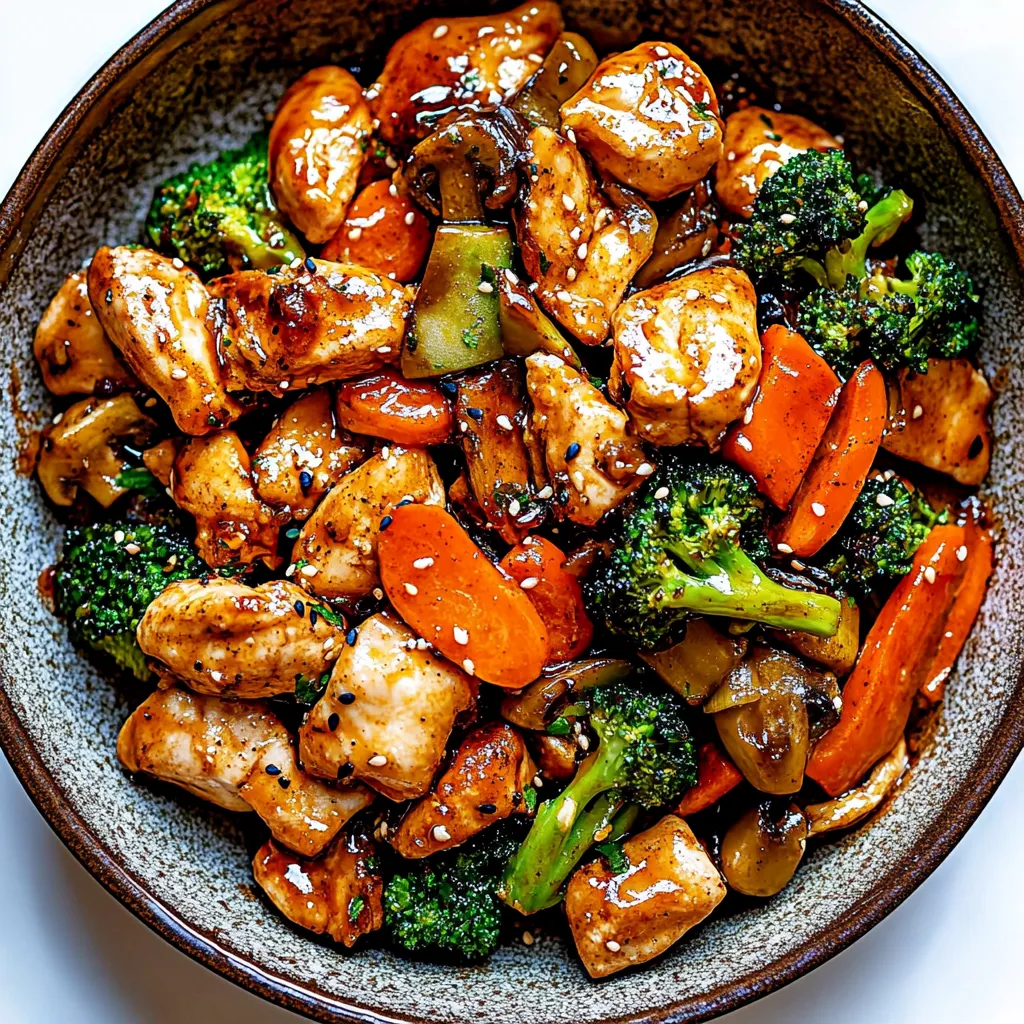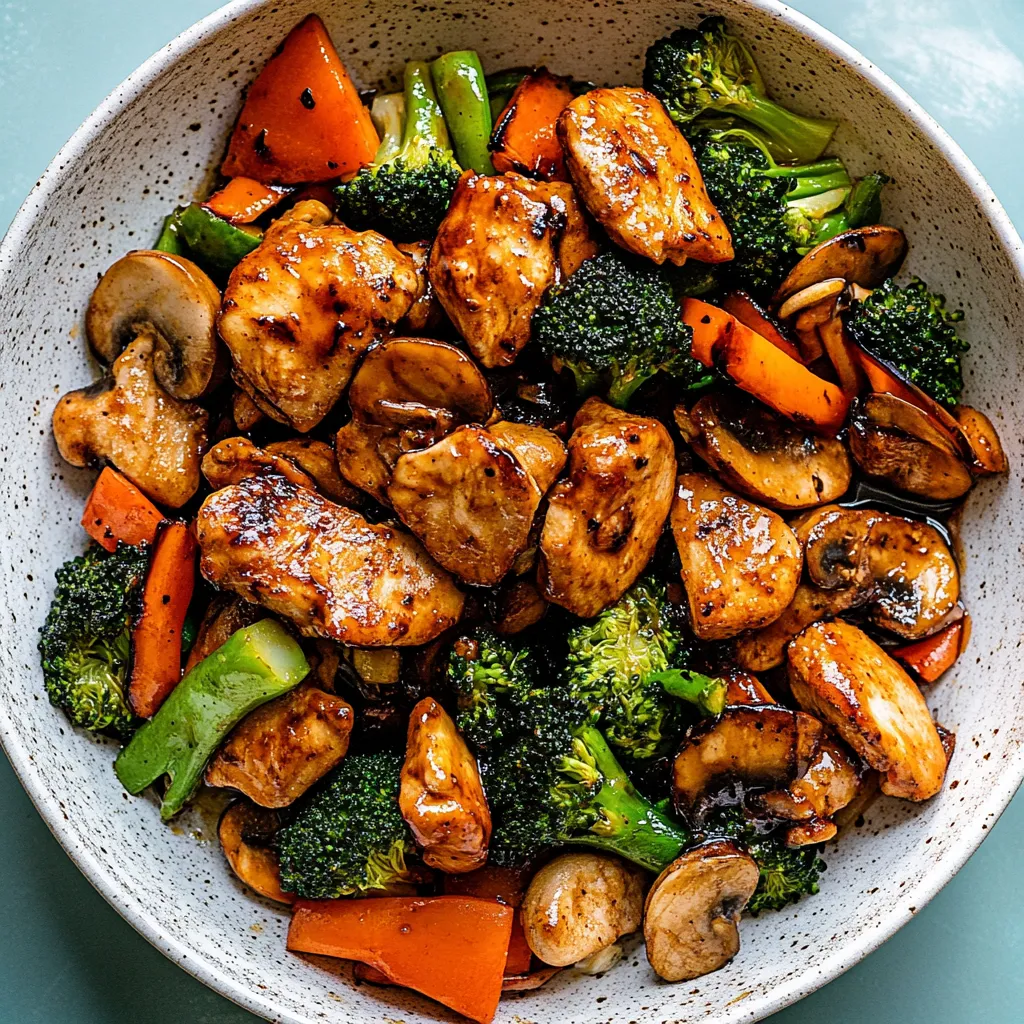 Pin it
Pin it
This Hibachi chicken and vegetables recipe brings authentic Japanese steakhouse flavors right to your home kitchen without the hefty price tag. The combination of tender chicken pieces, crisp-tender vegetables, and that irresistible Yum Yum sauce creates a complete meal that satisfies every time.
I first made this recipe when I was craving hibachi after a long week but didn't want to spend money eating out. My family was so impressed by the authentic flavors that it's now on our monthly rotation, saving us hundreds on restaurant visits.
Ingredients
- Boneless skinless chicken cubes: Forming the protein foundation, choose thighs for more flavor or breast for leaner option
- Vegetable oil: Provides the neutral base for high-heat cooking
- Sesame oil: Delivers that distinctive Asian flavor profile, a little goes a long way
- Fresh garlic and ginger: Create the aromatic foundation, always use fresh for best results
- Unsalted butter: Adds richness and helps create that signature hibachi texture
- Low-sodium soy sauce: Brings the umami depth without making the dish too salty
- Fresh vegetables: Like zucchini, mushrooms, broccoli, and bell peppers for color, texture, and nutrition
- Yum Yum sauce: For that creamy, slightly sweet finishing touch that makes hibachi memorable
Step-by-Step Instructions
- Prepare The Cooking Surface:
- Heat your griddle or large skillet to medium-high heat. The key is getting it properly preheated before adding any ingredients to achieve that signature hibachi sear without steaming the food. If using a standard skillet, choose your heaviest one for best heat retention.
- Create The Flavor Base:
- Add vegetable oil and sesame oil to the hot surface, then quickly add minced garlic and grated ginger. Stir constantly for about 30 seconds until fragrant but not burned. This aromatic foundation infuses the entire dish with essential hibachi character.
- Cook The Chicken:
- Add chicken cubes to the flavorful oils and spread them out to maximize surface contact. Let them sear for 2-3 minutes before the first flip to develop golden edges. Continue cooking until just cooked through, about 5-6 minutes total. Add butter and soy sauce, allowing them to create a light glaze as you toss to coat the chicken pieces. The butter creates that signature hibachi richness.
- Prepare The Vegetables:
- In another section of the griddle or in the same pan after removing chicken, add fresh oils and start with the denser vegetables first. Broccoli needs a head start of 3-4 minutes before adding onions and peppers. This staggered cooking ensures everything finishes at the perfect texture. Add the quick-cooking zucchini and mushrooms last, finishing with butter and soy sauce to season everything perfectly.
- Plate And Serve:
- Arrange the vegetables and chicken side by side on warm plates rather than mixing them together. This presentation mimics the hibachi restaurant experience and allows diners to control their portions. Serve with a generous dollop of Yum Yum sauce on the side or in a small ramekin.
 Pin it
Pin it
My absolute favorite part of this recipe is the ginger. I've learned that freshly grated ginger creates an aromatic quality that powdered simply cannot match. My daughter actually requests the "smells good chicken" whenever she wants this meal, referring to that moment when the ginger and garlic hit the hot oil.
Perfect Rice Pairing
The ideal companion to hibachi chicken and vegetables is properly cooked short-grain rice. For authentic results, rinse your rice thoroughly until water runs clear, then cook with a 1:1.25 rice to water ratio. Let it rest covered for 10 minutes after cooking for perfect texture. The slightly sticky consistency perfectly complements the savory hibachi flavors and helps capture any sauce on your plate.
 Pin it
Pin it
Make-Ahead Options
Hibachi chicken reheats beautifully, making it perfect for meal prep. To maintain optimal texture, slightly undercook the vegetables when preparing ahead. Store chicken and vegetables separately in airtight containers for up to 3 days. Reheat in a hot skillet with a touch of oil rather than microwave to maintain the texture. The Yum Yum sauce can be made up to a week ahead and actually improves in flavor after a day in the refrigerator.
Customizing Your Hibachi Experience
While this recipe provides the classic hibachi foundation, you can easily adapt it to your preferences. Swap chicken for thinly sliced beef or shrimp, adjusting cooking times accordingly. For a vegetarian option, substitute firm tofu pressed and cubed. Add bean sprouts, snow peas, or water chestnuts for texture variations. The most important element is maintaining high heat cooking to achieve the distinctive hibachi char and flavor profile.
Frequently Asked Questions
- → What is the best way to cook hibachi chicken?
Cooking hibachi chicken on a griddle or flat top gas grill ensures an authentic flavor. Use a mix of sesame oil and vegetable oil, and add garlic, ginger, and soy sauce for a flavorful finish.
- → How do I make the vegetables tender yet crisp?
Sauté the vegetables on medium-high heat, starting with the broccoli since it takes longer to cook. Gradually add the other vegetables, tossing frequently to prevent overcooking.
- → Can I substitute ingredients for dietary restrictions?
Yes, you can use coconut aminos instead of soy sauce for a gluten-free option. For dairy-free, replace butter with a vegan alternative.
- → What is Yum Yum sauce, and how do I use it?
Yum Yum sauce is a creamy, slightly tangy sauce commonly served at Japanese steakhouses. It pairs perfectly as a dipping sauce for both the chicken and the vegetables.
- → Can I cook this without a griddle or flat-top grill?
Yes, a large skillet over medium-high heat is a great alternative. Make sure to heat the pan properly and stir frequently for even cooking.
